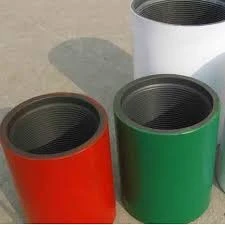- Afrikaans
- Albanian
- Amharic
- Arabic
- Armenian
- Azerbaijani
- Basque
- Belarusian
- Bengali
- Bosnian
- Bulgarian
- Catalan
- Cebuano
- Corsican
- Croatian
- Czech
- Danish
- Dutch
- English
- Esperanto
- Estonian
- Finnish
- French
- Frisian
- Galician
- Georgian
- German
- Greek
- Gujarati
- Haitian Creole
- hausa
- hawaiian
- Hebrew
- Hindi
- Miao
- Hungarian
- Icelandic
- igbo
- Indonesian
- irish
- Italian
- Japanese
- Javanese
- Kannada
- kazakh
- Khmer
- Rwandese
- Korean
- Kurdish
- Kyrgyz
- Lao
- Latin
- Latvian
- Lithuanian
- Luxembourgish
- Macedonian
- Malgashi
- Malay
- Malayalam
- Maltese
- Maori
- Marathi
- Mongolian
- Myanmar
- Nepali
- Norwegian
- Norwegian
- Occitan
- Pashto
- Persian
- Polish
- Portuguese
- Punjabi
- Romanian
- Russian
- Samoan
- Scottish Gaelic
- Serbian
- Sesotho
- Shona
- Sindhi
- Sinhala
- Slovak
- Slovenian
- Somali
- Spanish
- Sundanese
- Swahili
- Swedish
- Tagalog
- Tajik
- Tamil
- Tatar
- Telugu
- Thai
- Turkish
- Turkmen
- Ukrainian
- Urdu
- Uighur
- Uzbek
- Vietnamese
- Welsh
- Bantu
- Yiddish
- Yoruba
- Zulu
Understanding the Distinctions Between Casing and Tubing in Oil and Gas Operations
The Difference Between Casing and Tubing in the Oil and Gas Industry
In the oil and gas industry, the terminology can often become complex, especially when discussing the components involved in drilling and production. Two critical components that play a major role in the extraction of hydrocarbons from the earth are casing and tubing. While both are essential for the well construction process, they serve different purposes and are designed distinctly.
Casing An Overview
Casing is a series of steel pipes that are installed in the wellbore after drilling. Its primary function is to stabilize the wellbore, isolate the various underground formations, and protect freshwater aquifers from contamination. The casing is cemented to the formation to provide structural integrity and prevent any movement of formation fluids into or out of the well. It is designed to withstand high pressure and temperature, as well as corrosive elements that may be present in the geological formations.
There are several types of casing, each serving specific stages of drilling. The main types include surface casing, intermediate casing, and production casing. The surface casing is typically the first layer installed, which helps to protect shallow groundwater. Intermediate casing is installed if additional protection or strength is needed, usually in deeper wells. Production casing is installed to facilitate the extraction of oil or gas from the reservoir.
Tubing An Overview
In contrast to casing, tubing is a smaller-diameter pipe that runs through the center of the casing and serves as the conduit for oil and gas to flow from the well to the surface. It is installed after the well has been cased and cemented, and it allows for the efficient extraction of hydrocarbons. Tubing is designed to withstand the pressure created by the reservoir and the fluid column within it.
Tubing can be removed and replaced as needed, which allows for maintenance and repairs without requiring the entire well to be re-drilled. This flexibility is particularly important when considering the long-term production of a well. The choice of tubing material and diameter depends on factors such as the type of production, pressure, and the properties of the fluids being extracted.
what is the difference between casing and tubing?

Key Differences Between Casing and Tubing
1. Function The primary difference lies in their function. Casing is used for wellbore stability and protection against contamination, while tubing is responsible for carrying hydrocarbons to the surface.
2. Installation Casing is installed first and is cemented in place, creating a permanent structure within the wellbore. Tubing is installed later and can be removed and replaced as necessary.
3. Diameter and Material Casing usually has a larger diameter and is made of thicker steel to withstand external pressures, while tubing has a smaller diameter and is designed to handle the internal pressures created by the extraction process.
4. Flexibility Tubing offers more flexibility since it can be easily replaced during maintenance operations, whereas casing remains permanently fixed within the well.
5. Cost Implications The cost of casing generally outweighs that of tubing due to the materials and installation processes involved.
In conclusion, understanding the difference between casing and tubing is essential for anyone involved in the oil and gas industry. Both components are integral to the successful extraction of hydrocarbons, but they serve distinct purposes and are designed to meet different requirements. Properly implemented, they ensure both the safety and efficiency of the drilling and production processes.
-
Tubing Pup Joints: Essential Components for Oil and Gas OperationsNewsJul.10,2025
-
Pup Joints: Essential Components for Reliable Drilling OperationsNewsJul.10,2025
-
Pipe Couplings: Connecting Your World EfficientlyNewsJul.10,2025
-
Mastering Oilfield Operations with Quality Tubing and CasingNewsJul.10,2025
-
High-Quality Casing Couplings for Every NeedNewsJul.10,2025
-
Boost Your Drilling Efficiency with Premium Crossover Tools & Seating NipplesNewsJul.10,2025







